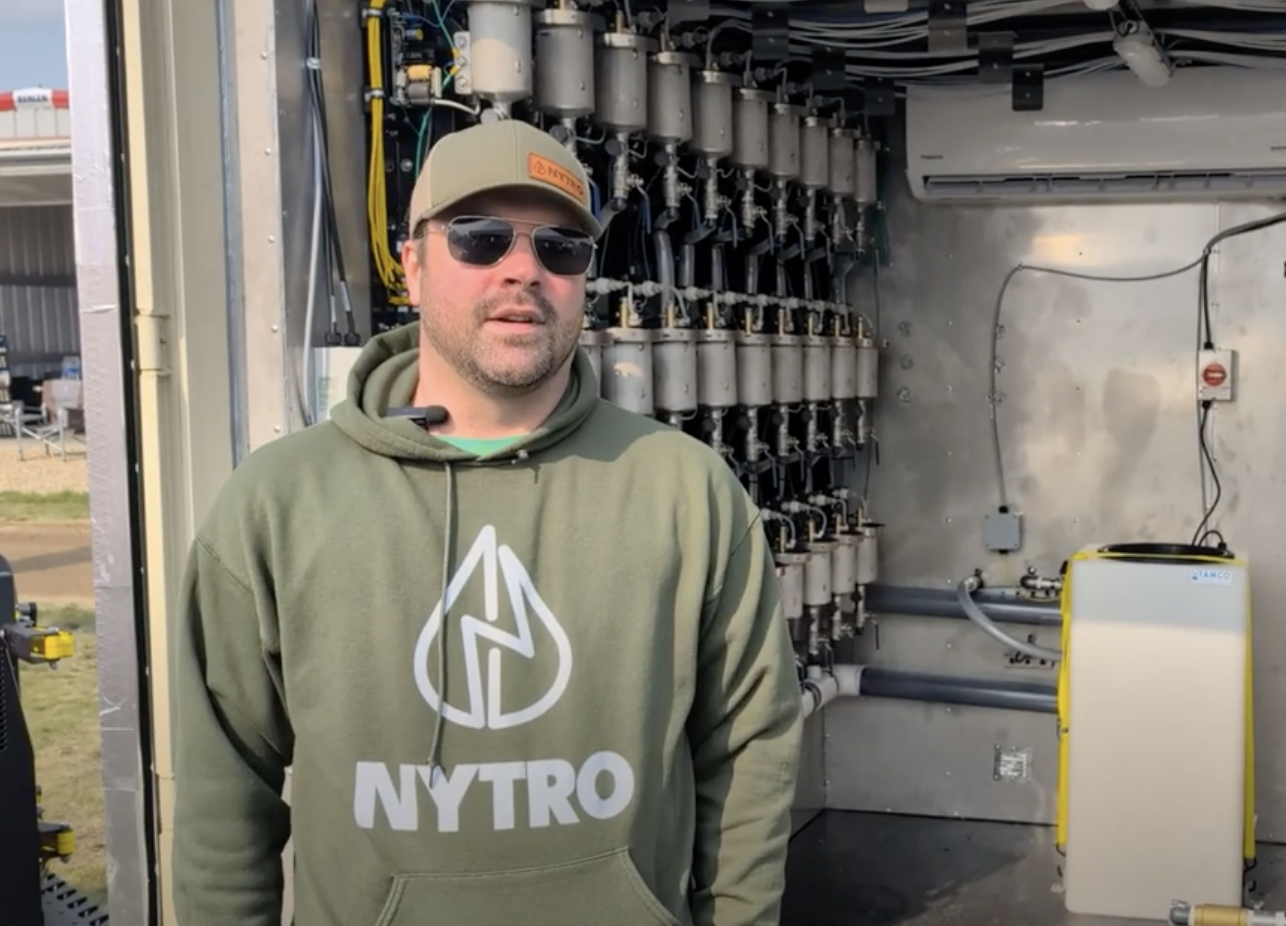Dean McPherson sees significant economic benefits in moving up to one of the new generation giant air drills. The Yellow Grass, Sask., producer replaced his 52 foot drill with an 88 foot Seed Master in 2008.
“We noticed an immediate drop in fuel usage and we were able to put in quite a few more acres per day,” said McPherson.
He added he cut his fuel bill by almost 70 cents per acre with the larger drill.
“With 14 inch row spacing, I’ve got fewer openers pulling through the ground, so I’m burning less fuel. And with 88 feet, I’m putting less hours on my tractor for lower fuel consumption.”
Read Also

VIDEO: Green Lightning and Nytro Ag win sustainability innovation award
Nytro Ag Corp and Green Lightning recieved an innovation award at Ag in Motion 2025 for the Green Lightning Nitrogen Machine, which converts atmospheric nitrogen into a plant-usable form.
Alfred Bechard of Sedley, Sask., saw the same benefits.
Two years ago, he traded in two smaller drills for one 80 foot Seed Master on 12 inch row spacing.
The 80 foot drill enabled him to seed the same amount of acres in almost the same amount of time, but with only one drill, one tractor and one operator.
Bechard farms with his son, Ron, and son-in-law Joel Cavers, so saving one operator is a big factor on their 11,000 acre farm.
For 2008, they traded in the year-old 80 foot drill for a new 88 foot M90 Seed Master on 14 inch spacings. The extra eight feet they gained with the larger drill shaved more than 24 hours off their seeding time.
“It meant we didn’t have to seed around the clock like last year,” said Bechard.
“We seeded 66 acres per hour (in 2008) compared to 50 acres per hour last year. We increased our tractor speed a little, but the wider drill was a big factor in increasing our acres per hour.
“It costs about $1,200 to fill our tractor every day. Reducing our fuel usage really adds up. And getting that crop in faster is essential, especially if there’s an early fall frost.”
Time and fuel savings aren’t the only advantages of the 88 foot drill, the two farmers have noticed.
With the 14 inch row spacing, they both expect to see the added benefit of conserving soil moisture. Wide spacing requires fewer openers and creates less soil disturbance.
Wider spacing also makes it easier to cut stubble taller and seed between the rows the following spring, another important part of the soil moisture equation, said McPherson.
He cut his stubble up to 14 inches high this fall and will seed between the rows with a Smart Hitch in the spring for better water-use efficiency.
Research performed by Agriculture Canada in Swift Current shows seeding between rows of taller stubble boosts yields because it catches more snow, shelters seedlings from the wind and can reduce evaporation by up to 30 percent in 12 inch stubble.
“Water is an input we don’t pay for, but it can cost dearly if you don’t have enough of it,” said McPherson.
“Wider row spacing should help maximize the return on our fertilizer investment, especially in dry years. It makes moisture less of a limiting factor in reaching our target yields.”
Research from the Prairie Agricultural Machinery Institute shows that cutting stubble taller also saves on fuel and labour at harvest time because less material passes through the combine.
“Everything I’ve heard and read about 14 inch row spacing points to good results. With fuel and input costs so high, we’ve got to keep looking for ways to lower our costs per acre,” said Bechard.

















